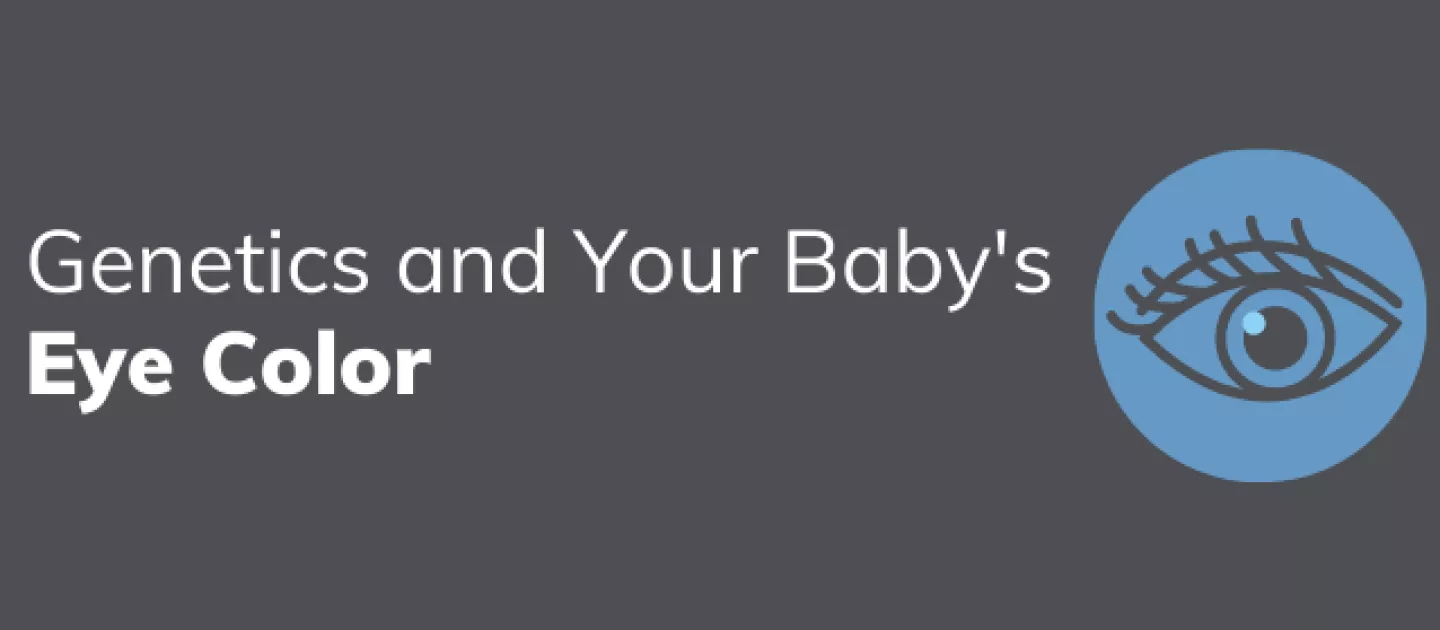Expecting parents spend a lot of time wondering what their baby will look like. Each of their unique characteristics are determined by traits inherited from both mom and dad. Just don't be too surprised if your baby gazes up at you with eyes that are a different color than what you expected. Thanks to genetics, there are a lot of variations that might result in unexpected eye color. So how does genetics work to decide your baby's eye color?
How Genes Control Eye Color
Eye color is one of the many traits we have that is determined by genes. Scientists used to think a single gene established eye color, but they have since learned multiple genes influence it. Eye color is regulated by melanocytes, which are skin cells that make melanin. Melanin is a pigment that gives your skin, hair, and eyes its shade. Genes are responsible for dictating the amount of melanin produced. Some babies produce more melanin than others. The more melanin, the darker the color.
Your baby’s eye color is also dependent on the combination of alleles (one of two or more versions of a gene) inherited from the parents. Babies can get a combination of two dominant alleles, one dominant allele and one recessive allele, or two recessive alleles. When more dominant alleles pair with less dominant or recessive alleles, the dominant one takes the lead.
For example, the brown allele is dominant, so if both parents have dark eyes, their baby will likely have dark eyes. If both parents have blue eyes, the odds are that their baby will also have blue eyes. If one parent has brown eyes and the other has blue, this leaves a 50/50 chance their baby will sport either color. And while it’s rare, a baby from brown-eyed parents can have striking blue eyes if the gene runs on both sides of the family. This is because eye color is ultimately influenced by multiple genes working together.
Can Eye Color Change Over Time?
You might have heard parents say that their baby’s eye color looks different now than when they were first born. You may think that eye color can’t change, but babies with light-colored eyes might experience a change in hue once the color-producing melanin cells are exposed to light. If this happens, you’ll be able to determine what their actual color will be as pigmentation slows down around six months of age. By their first year, pigmentation stops completely.
Although predicting the color of your baby’s eyes might not be as straightforward as you think, the one thing you can be sure of is that they’ll be beautiful.
Disclaimer: PerkinElmer and ViaCord do not endorse or make recommendations with respect to research, medications or treatment. All information is provided for informational purposes only.
Resources:
Very Well Health. Eye Color Genetics. https://www.verywellhealth.com/genetics-of-eye-color-3421603
WebMD. What is Melanin? https://www.webmd.com/a-to-z-guides/what-is-melanin#1
NIH. Allele. https://www.genome.gov/genetics-glossary/Allele











